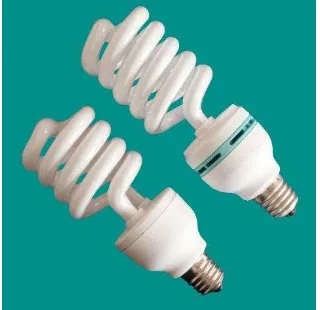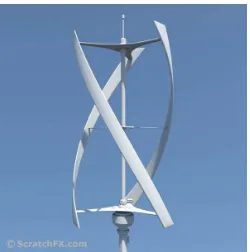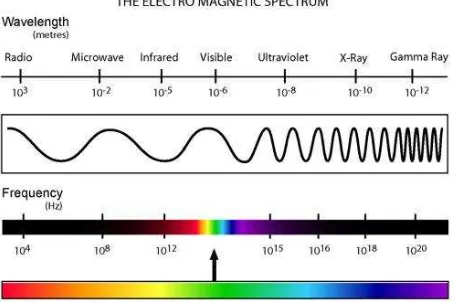INNOVATIVE LIGHTING SYSTEM DESIGN WITH
MAGNETIC LEVITATION PRINCIPLE
WONG KIAN LOON
B050910054
UNIVERSITI TEKNIKAL MALAYSIA MELAKA
UNVERSITY TEKNIKAL MALAYSIA MELAKA
INNOVATIVE LIGHTING SYSTEM DESIGN WITH MAGNETIC
LEVITATION PRINCIPLE
This report submitted in accordance with requirement of the University Teknikal Malaysia Melaka (UTeM) for the Bachelor Degree of Manufacturing Engineering
(Robotics and Automation) (Hons.)
by
WONG KIAN LOON B050910054 891123085887
DECLARATION
I hereby, declared this report entitled “Innovative Lighting System Design with Magnetic Levitation Principle” is the results of my own research except as cited in
references.
Signature : ………....
Author‟s Name : WONG KIAN LOON
APPROVAL
This report is submitted to the Faculty of Manufacturing Engineering of UTeM as a partial fulfillment of the requirements for the degree of Cachelor of Manufacturing
Engieering (Robotics and Automation) (Hons.). The member of the supervisory committee is as follow:
……….
Abstrak
ABSTRACT
In the midst of energy escalating costs and the risk of global warming, benefit of green technology is being focused by most of the scientist and engineer. Wind energy becomes a reliable energy source in most of the country. Wind energy categorizes as renewable energy which is an environment free. The focus of this project was designing a lighting system with magnetic levitation principle. Power generation was the main point of the project as an innovative lighting system should able to produce power for lighting system operates. VAWT was chosen as turbine to receive wind sources with appropriate reason on especially its ability to receive wind sources from different directions. However, VAWT has a problem with its starting torque, thus it was solved by application of magnetic levitation principle. The magnetic repulsive force used as a levitation force to reduce the VAWT weight. Coil wounded around a core that induced voltage was created magnetic field. It was proven by Michael Faraday on his contribution. An amount of voltage was able to generate by the system. Higher efficiencies in term of voltage generated and rotation speed able to achieve under lower wind speed conditions targeted at the better improvement of the system.
ACKNOWLEDGEMENT
First of all, I would like to take the golden opportunity to thanks my supervisor Mr. Mohd Najib bin Ali Mokhtar for his guidance, advice and inspiration. The knowledge and encouragement given has lend me a big hand in completing the project.
Secondly, I would like to appreciate the moral support given by my beloved family. They might not understand the project and knowledge behind, but they are willing encourage me and support me. Problem may occurred everyday and solutions are needed. My father and mother whom showing me the right path to success based on their experience. It is very useful advice when I am facing problem. Thank you. Thirdly, I would like to grateful to others lecturers and friend that I am unable to mentioned all. There advicing me, giving me idea and support me during my project. Sometime I might lost my word, but it was unintentionally.
DEDICATION
For my beloved family
For my dearest lecturers
For those who support me and bring me laughter
Sincerely and genuinely from
TABLE OF CONTENTS
CHAPTER 2: LITERATURE REVIEW 6
2.1 Lighting System 7
2.1.1 Incandescent 7
2.1.2 Tungsten Halogen 8
2.1.3 Compact Fluorescents Light Bulb (CFL) 9
2.1.4 Tubular Fluorescents Lamp 10
2.1.5 High-intensity Discharge (HID) 10
2.2 Energy Consumption Calculation of Lighting System 11
2.3 Magnetic Levitation 12
2.3.1 Magnetic Levitation Force between Permanent Magnet 13
2.3.2 Earnshaw‟s Law 14
2.4 Winf Turbine 16
2.4.1 Vertical Axis Wind Turbine (VAWT) 16
2.5 Permanent Magnet Generator 24
2.6 Magnetic Levitation Wind Turbine 25
2.7 Summary 27
CHAPTER 3: METHODOLOGY 28
3.1 Phase I 30
3.2 Phase II 30
3.2.1 Power Generator 31
3.2.2 Magnetic Levitation 31
3.2.3 Savonius Vertical Axis Wind Turbine 31
3.2.4 Model Fabrication 32
3.2.5 Test and Analysis 32
3.4.1 Estimated Material Used 40
3.5 Summary 41
CHAPTER 4: RESULT AND DISCUSSION 42
4.1 Fabricated Savanius Wind Turbine 42
4.1.1 Parts Preparation 42
4.1.1.1 Savonius Blade 42
4.1.1.2 Laser Cutting 43
4.1.1.3 Lathe Machining 43
4.1.2 Parts Assemblymen 45
4.1.3 Generator Fabrication 48
4.1.3.1 Coil Design 48
4.1.3.2 Coil Arrangment 49
4.2 Savonius Wind Turbine Analysis 51
4.3 Generator Analysis 55
4.3.1 Theoretical Voltage Calculation 56
4.3.2 Actual Generated Voltage 56
4.3.2.1 Single Coil Analysis 57
4.3.2.2 Overall Generator Analysis 58
4.3.2.3 Power Generated 63
4.4 Magnetic lecvitation 64
4.5 Summary 66
CHAPTER 5: CONCLUSION AND RECOMMENDATION 67
5.1 Conclusion 67
5.2 Recommendations 69
5.2.1 Savonius Blade 69
5.2.2 Magnetic Levitation 69
5.2.3 Generator 70
5.2.4 Application 70
References 71
LIST OF TABLE
2.1 Key properties of different types of HID lamp 10
2.2 Some properties of permanent magnet 24
3.1 Maerial list and process involved to fabricate 39
3.2 Estimated Material List 40
4.1 (a) Theoretical Maximum Power and Optimal rotation speed of designed Savonius wind turbine
52
(b) Actual rotational speed, RPM 53
(c) Comparison between theoretical and actual RPM and its efficiency
53
4.2 Theoretical voltage that coil could generate 56
4.3 Resistance value and Peak Voltage results by single coil 57 4.4 Voltage recorded under different wind speeds by six coils 58 4.5 Comparison between theoretical result and actual result in term of
efficiency
61
4.6 Actual power, theoretical power and efficienc 63
LIST OF FIGURES
1.1 Example power saving light bulbs 2
1.2 Vertical Axis Wind Turbine (VAWT) 3
2.1 Electromagnetic Radiation Wavelength 6
2.2 Incandescent light bulb 8
2.3 Tungsten Halogen light bulb 8
2.4 Compact Fluorescent Light bulb 9
2.5 Earshaw‟s law 15
2.6 Savonius Wind Turbine rotor design for performance experiment 18
2.7 Power generated with wind speed of 8.8ms-1 19
2.8 P.Clauge Experimental Savonius VAWT 19
2.9 Flow field between two blades and three blades 21 2.10 Sectional view of A. S. Grinspan experimented wind turbine 22
2.11 3D view of single twisted blade 22
2.12 Geometry at top and bottom perimeters 22
2.13 Twisted Blade rotor 23
2.14 Huachun Wu magnetic levitation design. 1-Impeller 2-rotor 3-top radial Magnetic Bearing 4-generator 5-axial magnetic bearing 6-down radial Magnetic bearing
26
2.15 PMB design 27
3.1 Flow chart for conducting overall research project 29
3.2 Assembled design 33
3.3 Multiple view design 34
3.4 Detail Drawing 34
3.5 Savonius Turbine Blade Design 35
3.7 Magnet Mouting Part 36
3.8 Coil mouting base 37
3.9 Shaft 38
4.1 Fabricated Savonius Blade 43
4.2 Lathe machined shaft 44
4.3 Assembled flowchart 45
4.4 Bearing mounted to Base Plate 46
4.5 (a) Assembled Base Savonius wind turbine 47
(b) Method of assemblymen for every component of Base Savonius wind turbine
47
4.6 Repulsion between magnets created a levitation force between Top and Base Savonius wind turbine
47
4.7 Assembled Savonius wind turbine 48
4.8 Single Coil with 200 turns 49
4.9 Coils arrangement on Base 50
4.10 (a) Circuit diagram 50
(b) Completed circuit 50
4.11 Savoius wind turbine Top view 51
4.12 Comparison graph between theoretical and actual rotational speed versus wind speed
53
4.13 Bar chart shws average peak voltage able generated by each coil 58 4.14 Recorded voltage plot for three different wind speeds 59 4.15 Recorded current plot for three different wind speeds 59
4.16 Average Voltage versus Wind Speed 60
4.17 Average current versus wind speed 60
4.18 Result comparison between theoretical and actual voltage generated 62
4.19 Half wave rectification waveform 62
4.20 Area that blocked the wind 64
4.21 Chart of force vs. Distance for N42 with 35mm OD, 25mm ID and 30mm height
LIST OF ABBREVIATIONS, SYMBOLS &
NOMENCLATURE
VAWT - Vertical Axis Wind Turbine HAWT - Horizontal Axis Wind Turbine PMB - Permanent Magnet Bearing CFL - Compact Fluorescents Lamp HID - High Intensity Discharge
PSM - Project Sarjana Muda
CO2 - Carbon dioxide
Nd - Neodynium
DXF - Drawing Exchange Format
B - Magnetic field
A - Surface area of magnet
dt - Time of change
v - rotor rotation speed
r - coil radius
V - Voltage
CHAPTER 1
INTRODUCTION
Figure 1.1: Example power saving light bulbs
(Sources: < http://www.abbarquitectura.com/the-light-on-energy-saving-light-bulbs/> 20/11/2012)
Figure 1.2: Vertical Axis Wind Turbine (VAWT)
(Sources: http://www.turbosquid.com/FullPreview/Index.cfm/ID/543054 20/11/2012)
1.1 Problem Statements
In every house or in every building, electricity consumed for lighting system would be about 20 to 50% of the total electricity consumed in everyday. Consequently, the electricity cost of lighting system would hold about 20 to 50% of electricity monthly bills. Researcher make predictions on electrical consumption on lighting system from the year 2006 to 2020, the result shows the demand for electricity for lighting system will continuously increase (Lester R.Brown et al, 2005). Results proved that more and more energy power must provide to the world in order to fulfil the demand of electricity. Nuclear power plant, hydro power generation and oil and gas power generation plant which brought to environment pollution and ecological unbalance continuous appeared in every corner of the world. It is because the mentioned power plant is the only able to provide huge energy power to our human being.
VAWT. Various designs available in market, the problems here is how to make sure the designed VAWT able to rotate as the direction of air flow in a city was not constant. Furthermore, permanent magnetic power generator must include with magnetic levitation for the rotor.
1.2 Objective
In the line with problem statements, objectives of the project are drawing up. First of all, the intention of the project is to design a lighting system with principle of magnetic levitation. It is a lighting system which electricity is provided by a self power generation system. Magnetic levitation is combining with VAWT which mechanically operate by air flow. Thus, the project is aiming to study, analyze and interface VAWT with magnetic levitation. There are different VAWT design created by many Engineer, this project is mainly focusing on Savonius VAWT. The next objective is to study and design a suitable VAWT which able to rotate in irregular air flowing environment.
1.3 Scopes
There are many different researches and developers have designed VAWT with the application of magnetic levitation principle. However, most of the VAWT were designed for large power generation applications. It is used as one of the main power supply for a city or town in a country. Throughout the available results, this project is focusing on the following scopes: -
- Review existing structure of VAWT and design accordingly with smaller scale for lighting system.
- To study principle of magnetic levitation and apply into VAWT power generator.
- To design a VAWT which able to rotate although air flowed from different horizontal direction.
CHAPTER 2
LITERATURE REVIEW
2.0 Light
Light is a simplification of visible light which is a type of electromagnetic radiation. It is visible to the human eye. Electromagnetic radiation is terminology used to describe kinds of energy released by Sun. Electromagnetic radiation includes radio waves, TV waves, radar waves heat, light, ultraviolet light, X-rays, short waves, microwaves and gamma rays. Every electromagnetic radiation is classified according to intensity or frequency. Light researched to having a wavelength of between 380nm to 750nm (Pavel Borodulin at al, 2002).
Figure 2.1: Electromagnetic Radiation wavelength
There are many types of light sources. The common light sources experiences everyday would be thermal light sources which are emission of light from a red-hot object. An example of thermal light sources would be the Sun light (Mark Csele, 2004). Due to the concept of thermal light source of the sunlight, our great scientist
Thomas Alva Edison invented light bulb which allows electric current flow through thin tungsten until its glowing light. Light bulb invention illuminates every corner of the world during the night hour.
2.1 Lighting System
Lighting is major electric consuming in human daily life. Lighting is kind of illumination using light to achieve an aesthetic effect. In daily using, lighting used to light up the interior of a building. Due to energy saving purpose, there are different types of lighting are invented. The most common types of lighting found in everyday purpose are fluorescent lighting. Other types of lighting include incandescent, tungsten halogen, compact fluorescent lamps, tubular fluorescent fixtures, and high intensity discharge. Both of the lighting is classified according to in power consumption and levels of usage.
2.1.1 Incandescent
Incandescent light bulb is kind of electric light which produce light with filament
wire heated to a high temperature by electric current until its‟ glowing. Manufacturer


